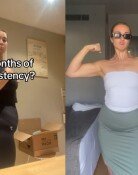[Opinion] Counterfeit Artworks
Sometimes even the greatest painters fail to distinguish their own works from those of others. Paintings of deceased artists are appraised by connoisseurs, while those of living ones, in principle, are confirmed by the painters themselves. One distinguished painter once judged one of his masterpieces as a fake, angrily pointing out every single feature of the work in person. If it was not for the artist`s son, who later witnessed that he watched his father drawing the painting in question, such a work of art-historical significance could have ended up considered a counterfeit.
Some senior artists refuse appraisal requests from art dealers or owners of artworks as they are not quite sure about their memory and judgment. Even the best specialists mistakenly appraise elaborately reproduced counterfeits as authentic ones from time to time. This is why artwork appraisal is not about verifying the truth but about inference. Some argue that judging an authentic work of art as a fake does more harm than vice versa, as a great artist`s authentic piece being considered a counterfeit could be a huge loss for art history.
Famous Korean painters Lee Jung-seop and Park Su-geun lived short and unfortunate lives, not being recognized while they were alive. In his refugee life in Busan during the Korean War, Lee Jung-seop had no money to buy painting materials, so he sat in a coffee house and engraved drawings on silver paper taken from his cigarette packs. Park Su-geun made a living by drawing portraits of United States Forces Korea (USFK) members on one-dollar handkerchiefs available in the USFK PX and selling them for five dollars each. Both artists were highly appreciated after their death, and they became the painters with the largest number of counterfeits being circulated.
With regards to the paintings of Lee Jung-seop and Park Su-geun, whose authenticity has been a huge controversy, 14 art specialists, under the request of the prosecution, said they believed those paintings were fake. Many other specialists, however, refrained from stating their opinions, for they were not feeling certain enough. Gaining ground is the view that this should be an opportunity to curb swindlers in the art market and correct disorder in artwork distribution. Another prominent view, however, is that careful judgment is needed as the bereaved family of Lee Jung-seop, who might have long lamented the tragic death of the great artist, was unlikely to create counterfeits. This is why all eyes are on how the prosecution`s investigation might be concluded.
Hwang Ho-taek, Editorial writer, hthwang@donga.com







